My easy sponge cake recipe is a light and airy cake that you’ll use to create many of your favorite homemade desserts. This fluffy sponge cake is perfect for strawberry shortcakes, and serve it with my strawberry coulis for a simple, elegant dessert.
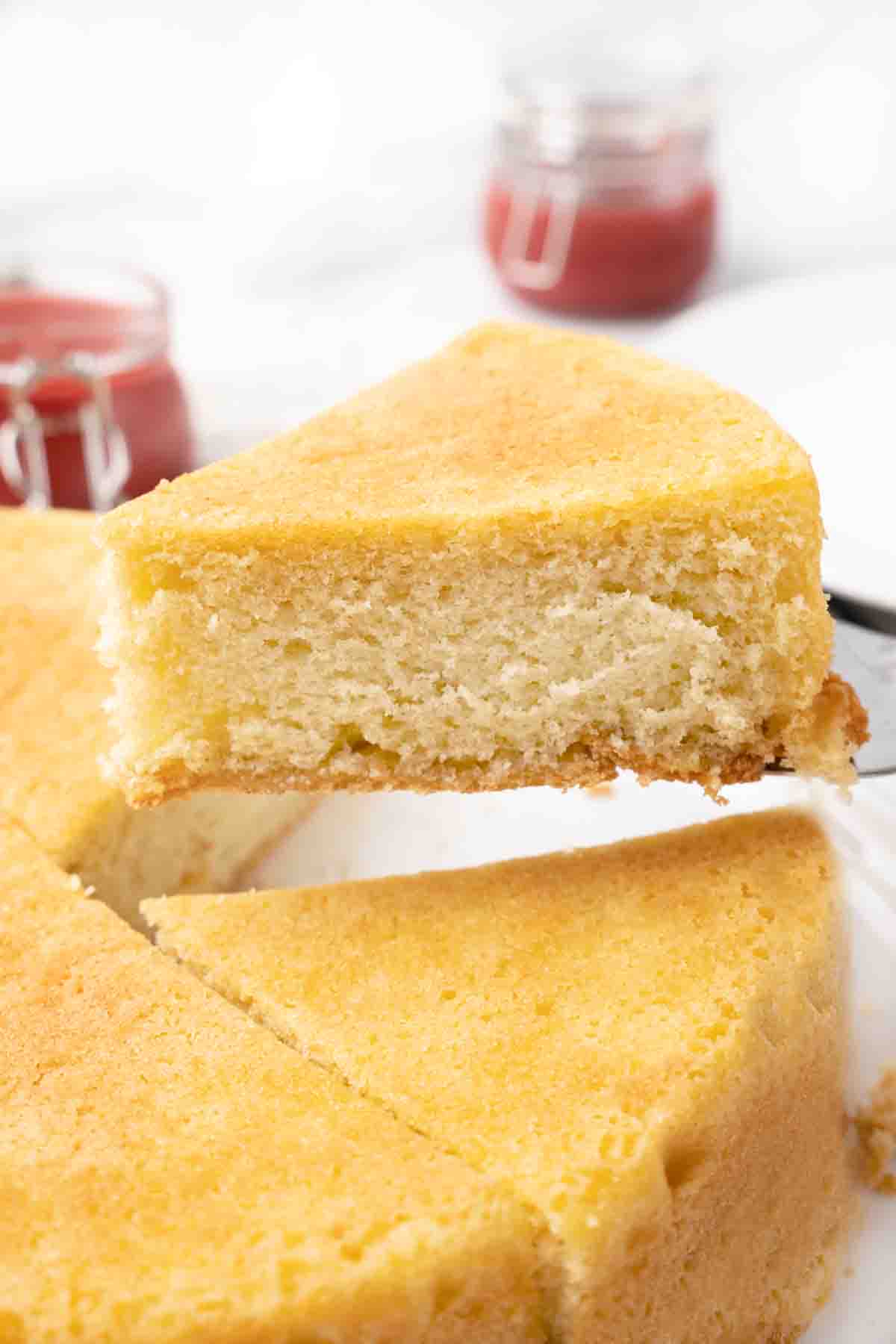
You’re going to love this simple vanilla sponge cake. It’s one of my favorite cake recipes; it’s easy to make and versatile.
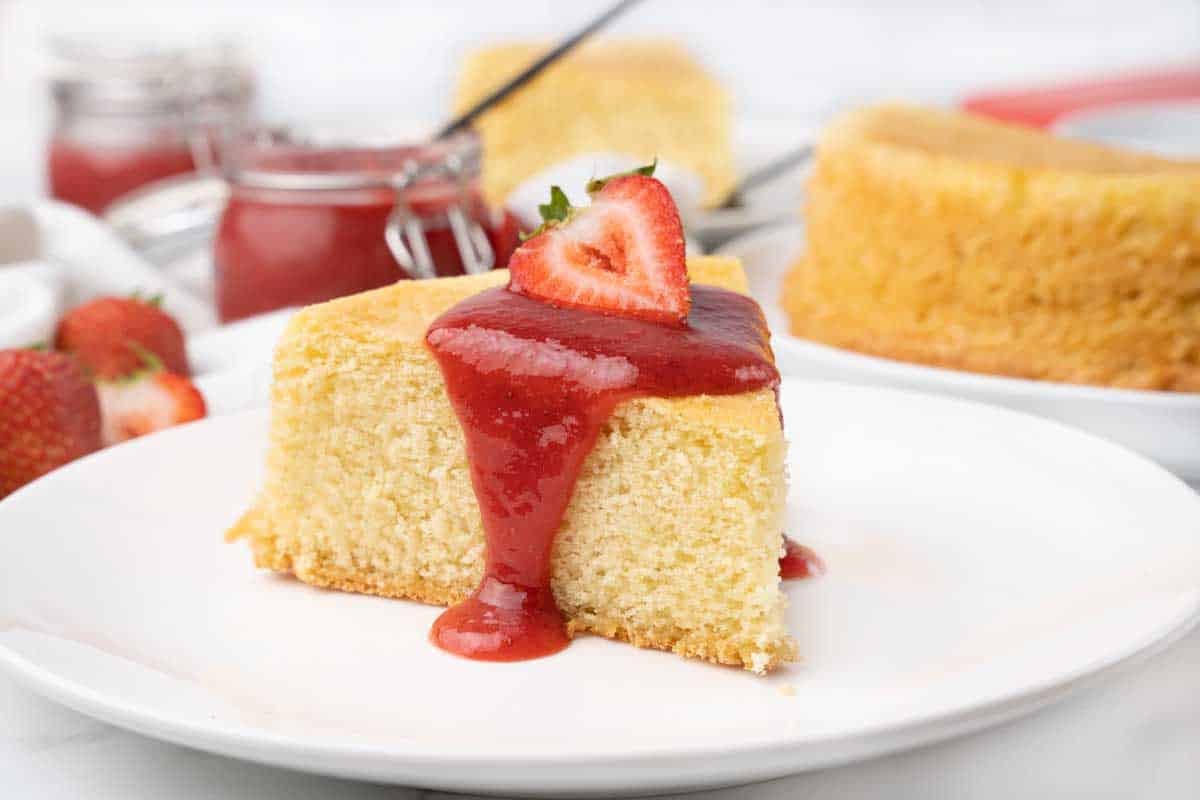
This simple sponge cake recipe, along with a good pound cake recipe, are two cake recipes everyone should know how to make.
Ingredients to make Sponge and Strawberry Coulis
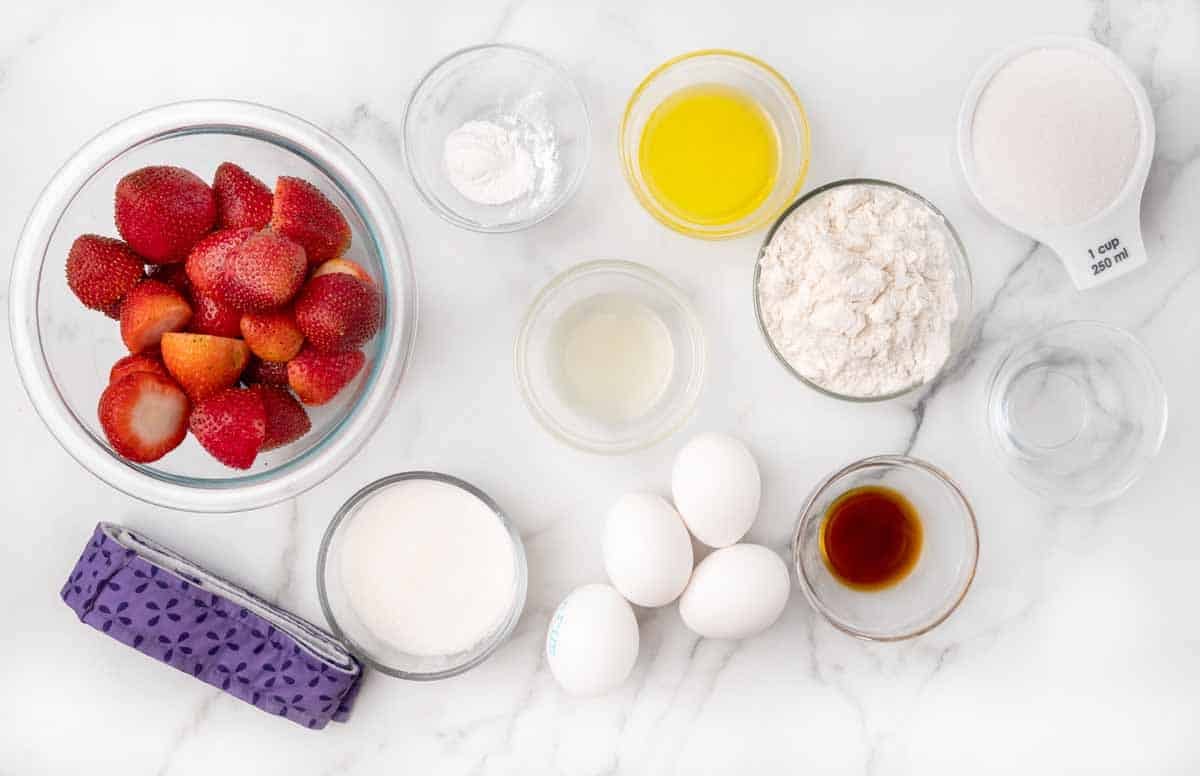
Let’s start by gathering the ingredients we need to make my Easy Sponge Cake with Strawbery Couliis. In Chef Speak, this is called the “Mise en Place,” which translates to “Everything in its Place.”
Not only does setting up your ingredients ahead of time speed up the cooking process, it also helps ensure you have everything you need to make the dish.
What is a sponge cake?
There are four basic types of sponge cake Biscuit Sponge, Genoise, Angel Food Cake, and Chiffon Cake.
You’ll find different varieties of each of those styles of sponge cake, with differences in ingredients and techniques.
The most common is the Genoise cake (the style I made), which is used for many of our favorite cakes. The other most popular style is a classic Victoria sponge cake, which has you separate the egg white mixture from the egg yolk mixture, adding them at different stages of the batter preparation.
How to make Strawberry Coulis
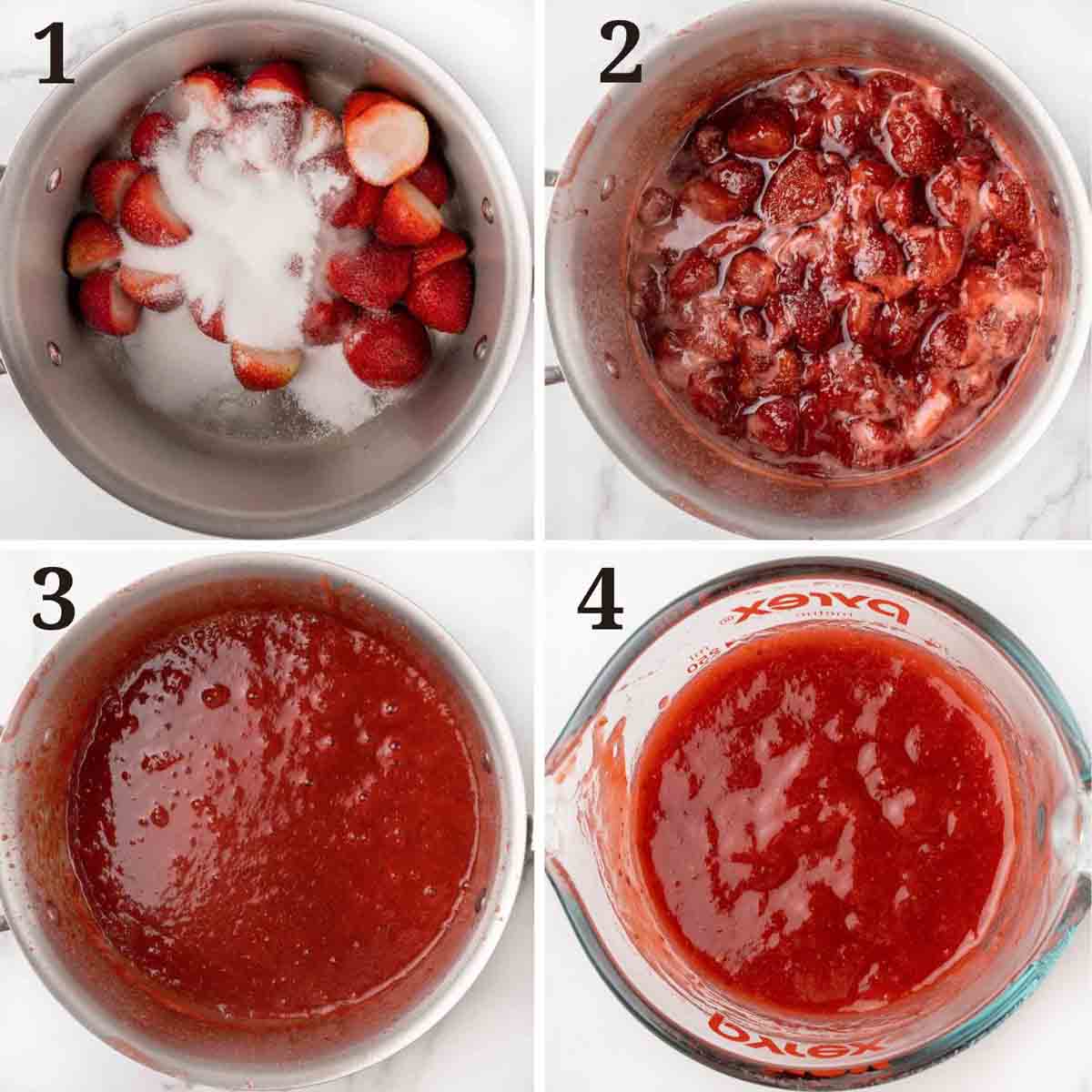
- Rinse the strawberries in cold water and remove the stems. Then add the strawberries, sugar, and lemon juice to a saucepan over medium heat, and bring to a boil, stirring as needed.
- Turn the burner down to low heat and allow the mixture to simmer for 10 minutes.
- Turn off the heat, and using a handheld immersion blender (or food processor), puree the mixture into a smooth sauce (it should coat the back of a spoon).
- Strain the strawberry puree through a fine-mesh sieve to remove the seeds. Allow the strawberry coulis to cool before using.
How to Make a Sponge Cake
- Preheat the oven to 350 degrees F and place a rack in the center of the oven.
- Line an 8-inch round cake pan (at least 2″ tall) with parchment and spray with pan spray.
- Wet the baking strips and place them around the baking pan. This will create an evenly risen cake. *Baking strips ensure the cake rises evenly and doesn’t form a dome.
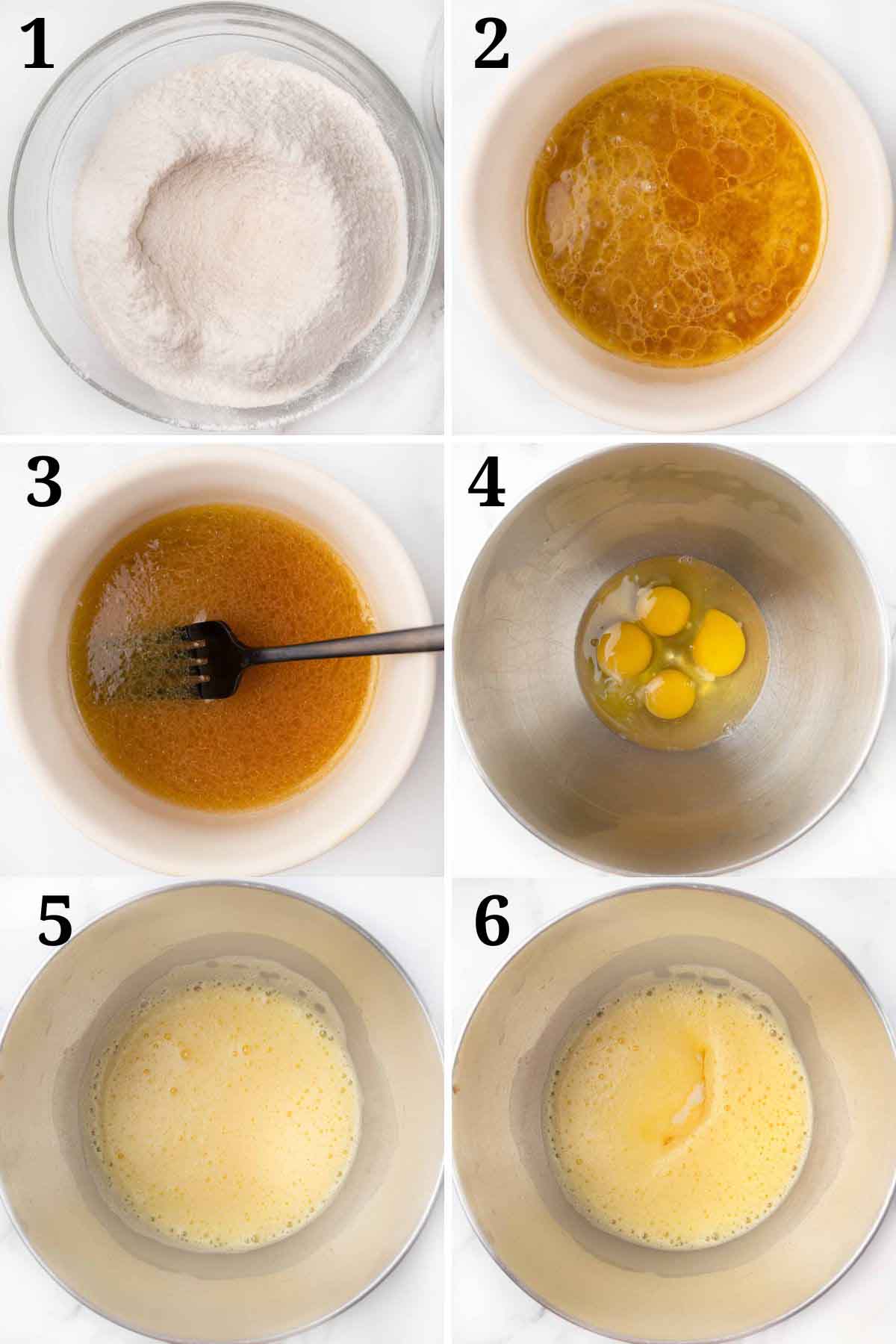
- Add baking powder to the all-purpose flour and sift it twice. Set the flour mixture aside until needed.
- Add the melted butter, hot water, and vanilla extract to a medium bowl
- Whisk the wet ingredients to combine.
- Add the eggs to the bowl of your stand mixer fitted with the whisk attachment (or a large bowl with an electric mixer).
- Whip the eggs on high speed until foamy (2-3 minutes). Continue to whip the egg mixture until the mixture falls off the whisk in a thick ribbon that doesn’t disappear for 1-2 seconds.
- Reduce the speed to medium, and add the granulated sugar, one tablespoon at a time, while continuing to whip.
Some recipes use egg whites only, while some separate the egg whites and egg yolks, adding them at different stages of the sponge cake recipe. I prefer to keep it simple using the whole egg in one application.
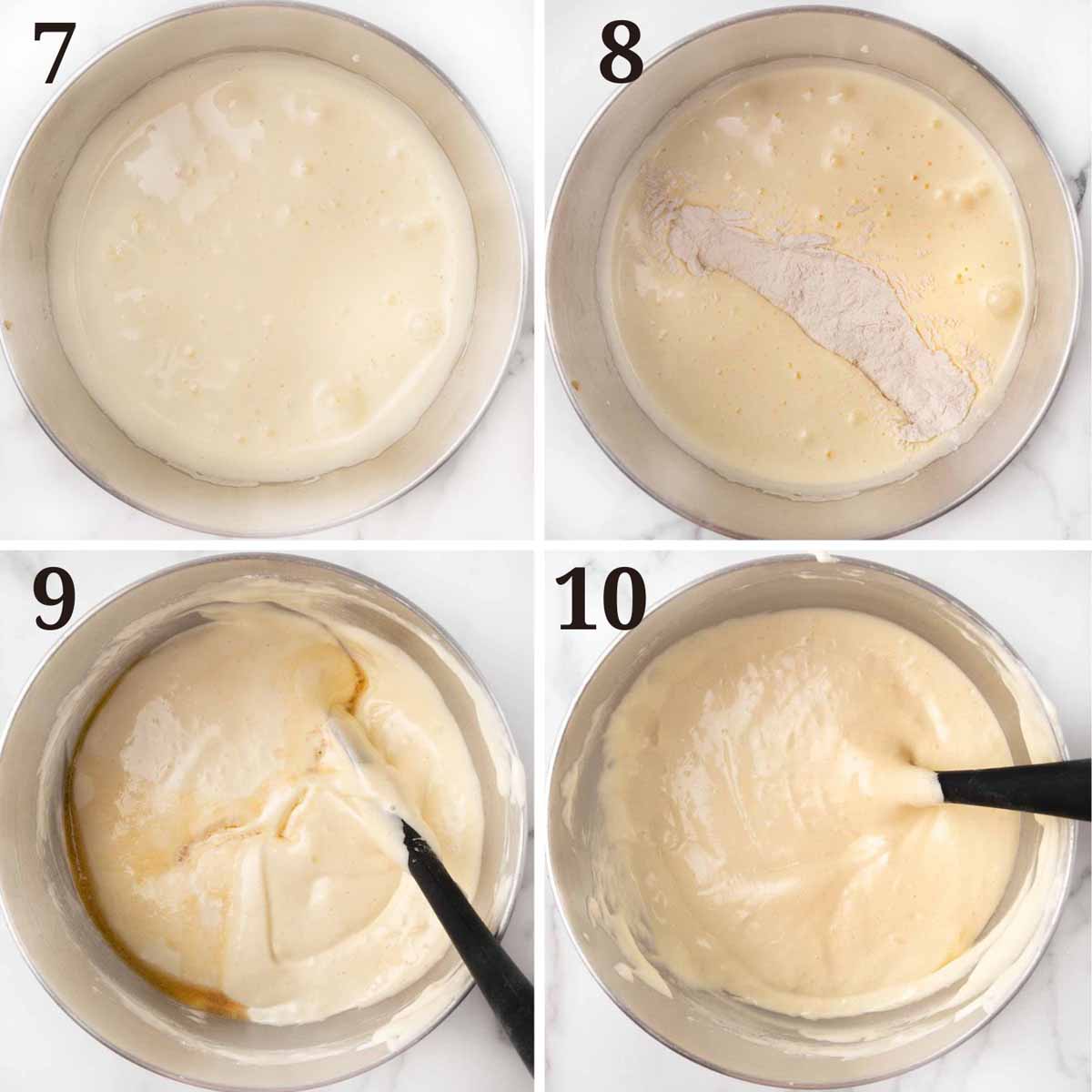
- Add the wet ingredients to the egg mixture and whip until light and creamy (3-4 minutes).
- Gently fold the dry ingredients into the egg mixture by hand, one half at a time, by making figure eights with a rubber spatula. Fold the flour mixture just enough to incorporate. *Do not overfold the batter, or the cake will be dense and doughy.
- Add the vanilla extract to the batter.
- Mix just enough to incorporate.
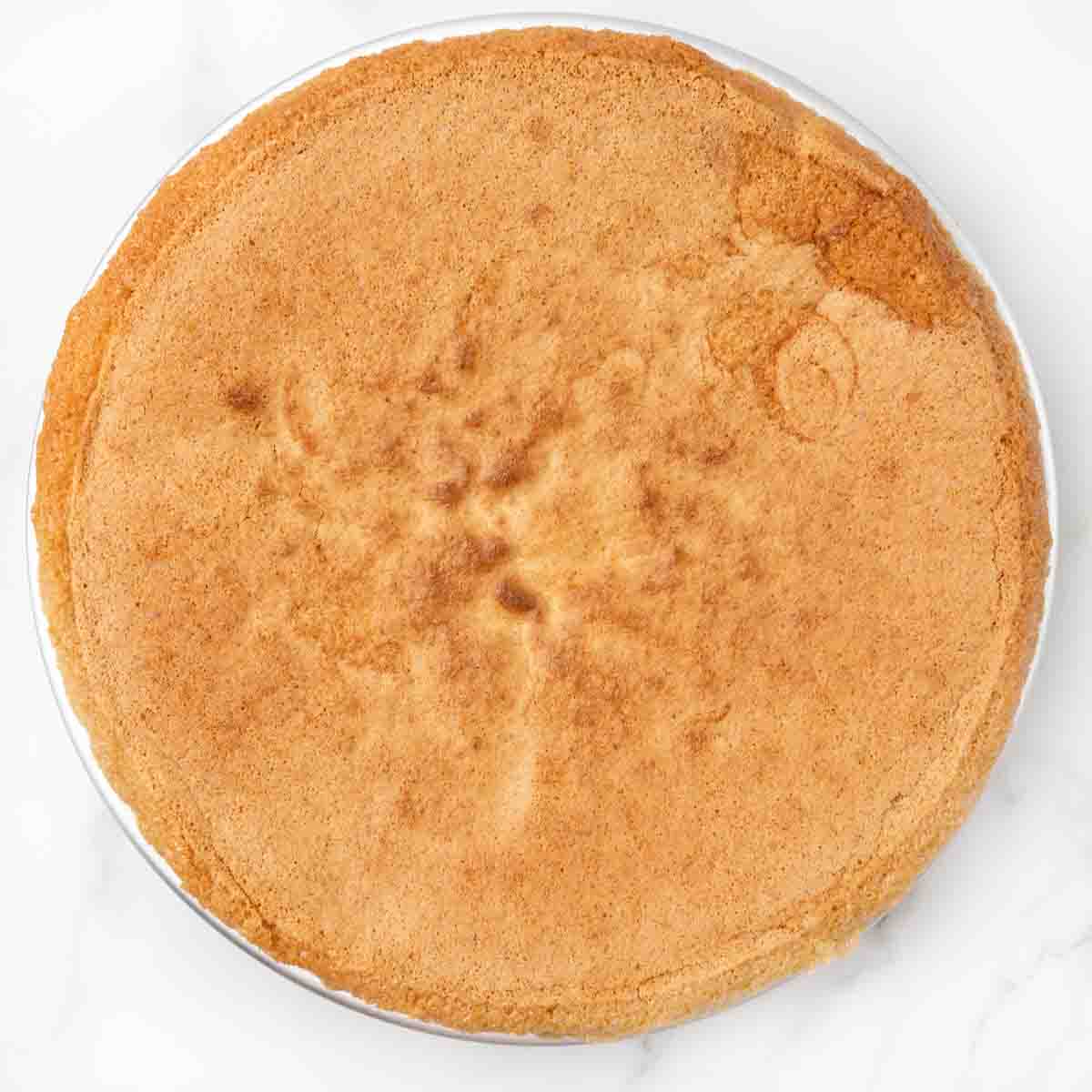
- Pour the cake batter into the prepared baking pan and gently tap the pan on the counter to get rid of any air bubbles.
- Place the cake pan on the center rack of the preheated oven and bake for 35 minutes or until a toothpick inserted into the center comes out clean. *Do not open the oven to check until the 30-minute mark. Depending on your oven the cake, the baking time may vary from 30-40 minutes.
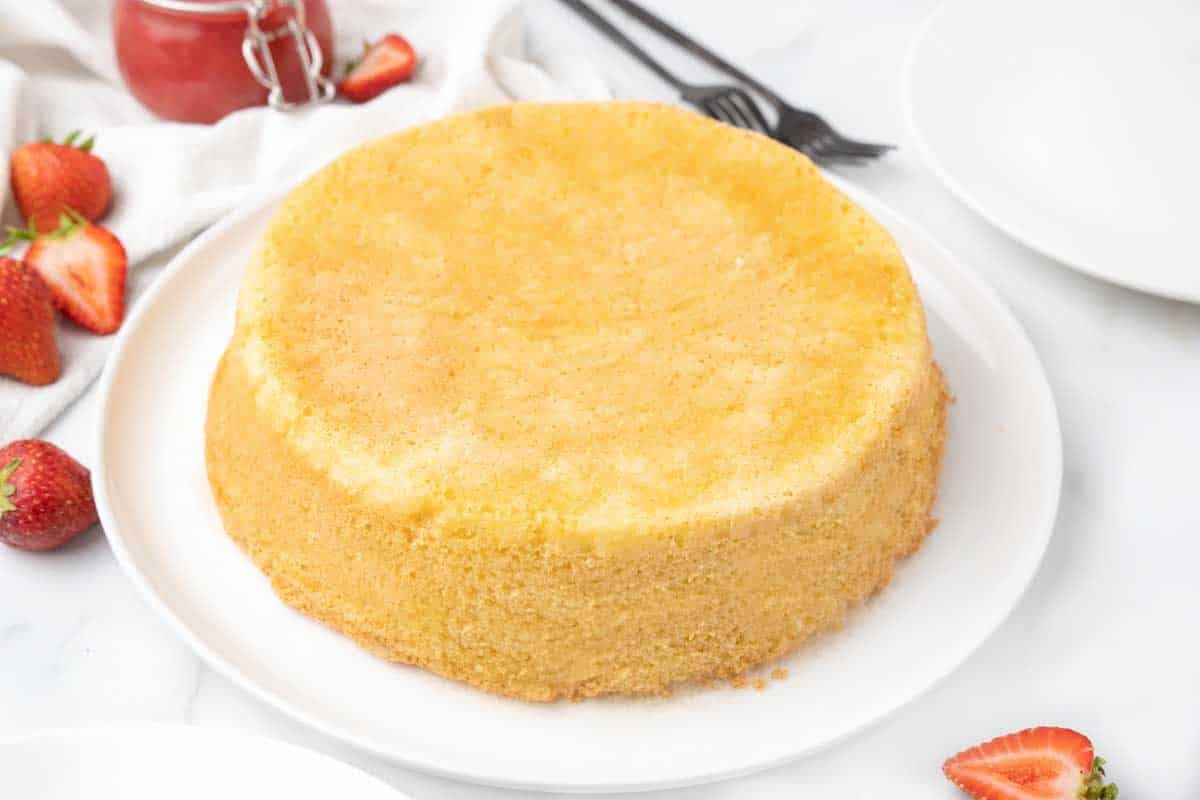
- Gently remove the sponge cake from the oven, place it on a wire rack, and let it sit undisturbed for 5 minutes.
- Invert the sponge cake onto the cooling rack and remove the parchment from the cake. Allow the cake to cool completely before serving.
*The whole cake can be split to make a layer cake or strawberry shortcake.
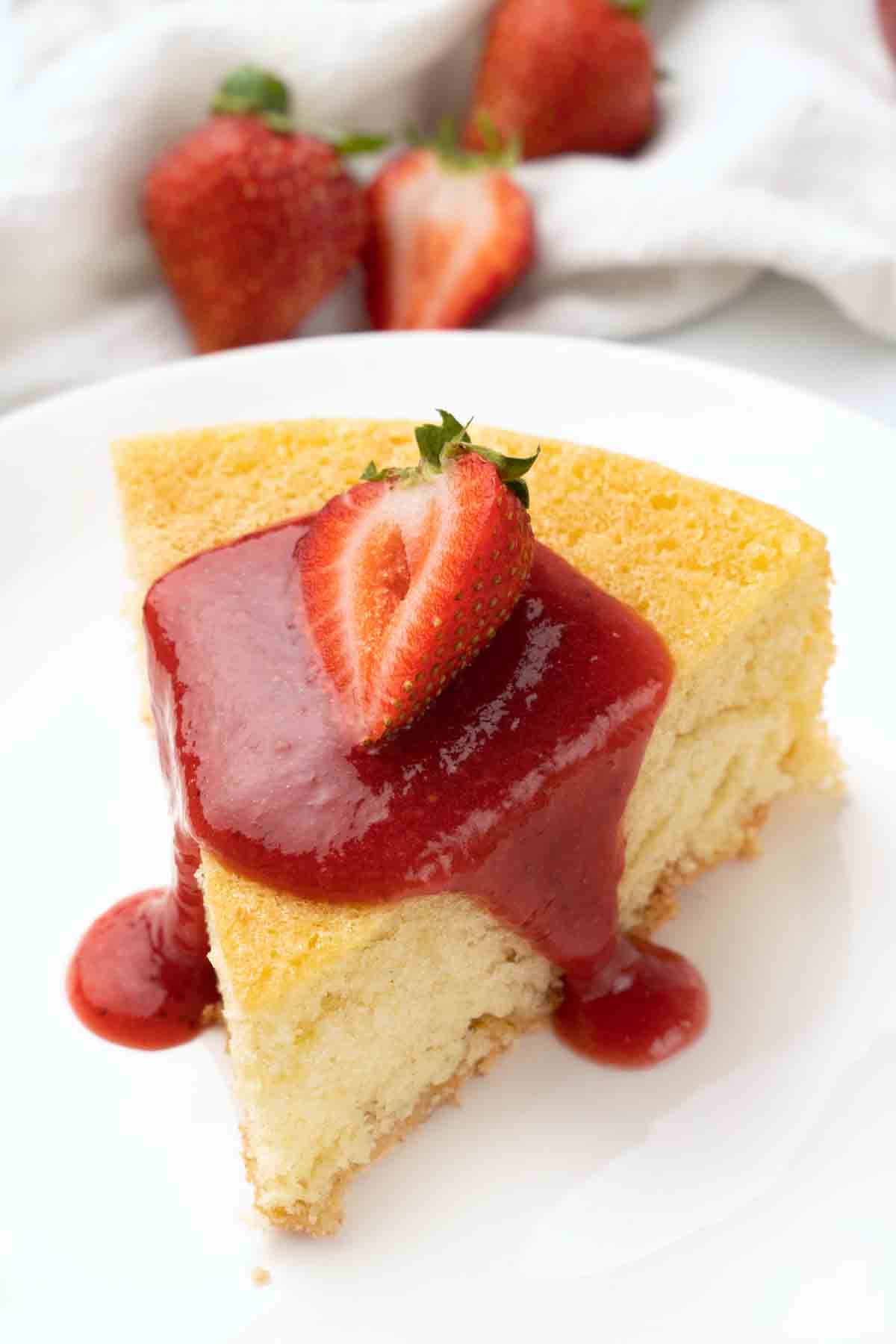
This simple sponge cake goes really well with my strawberry coulis, but you can also serve it with fresh fruit and whipped cream or with a scoop of vanilla ice cream.
For an easy yet elegant dessert, split the cake and add a filling of raspberry jam. Dust the top of the cake with confectioners’ sugar, and guests will think you ordered dessert from your local bakery.
Store any leftover sponge cake in an airtight container on the counter at room temperature. The cake does freeze well; just make sure to double-wrap it in plastic wrap.
Recipe FAQ’s
There are four basic types of sponge cake, Biscuit Sponge, Genoise, Angel Food Cake, and Chiffon Cake.
You’ll find different varieties of each of those styles of sponge cake, with differences in ingredients and techniques.
The most common is the Genoise, which is used for many of our favorite cakes.
If your sponge cake is dry and hard, more than likely, the problem probably lies in the beating. The butter must be beaten well to give the mixture enough air for a light and fluffy texture. It’s important that the butter be close to room temperature when whipping.
Over-mixing the batter is the main issue that troubles most cakes. Over-mixing means air can escape, which makes the cake more dense and tough.
Under-mixing the batter is another reason the cake does not come out as light and airy as it should. Under-mixing means not adding enough air to the batter. There is definitely a delicate balance between over-mixing and under-mixing.

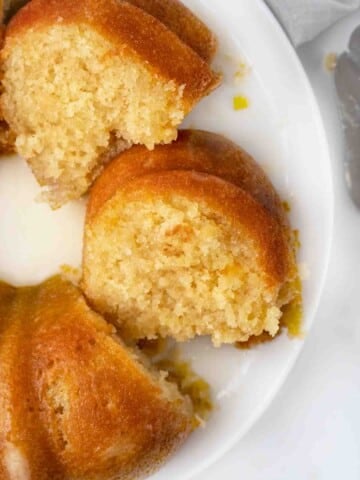
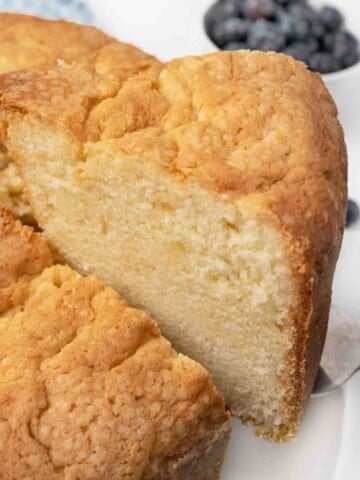
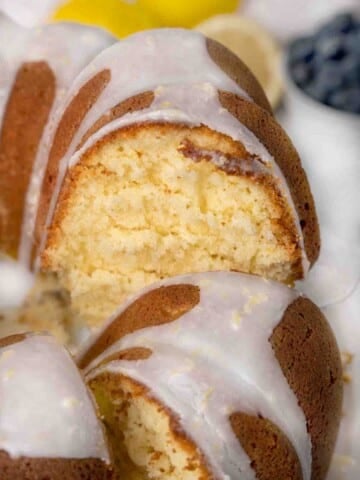
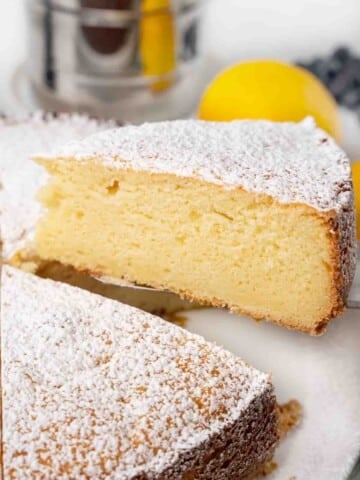
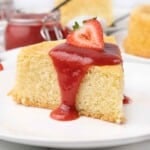
Leave a Comment